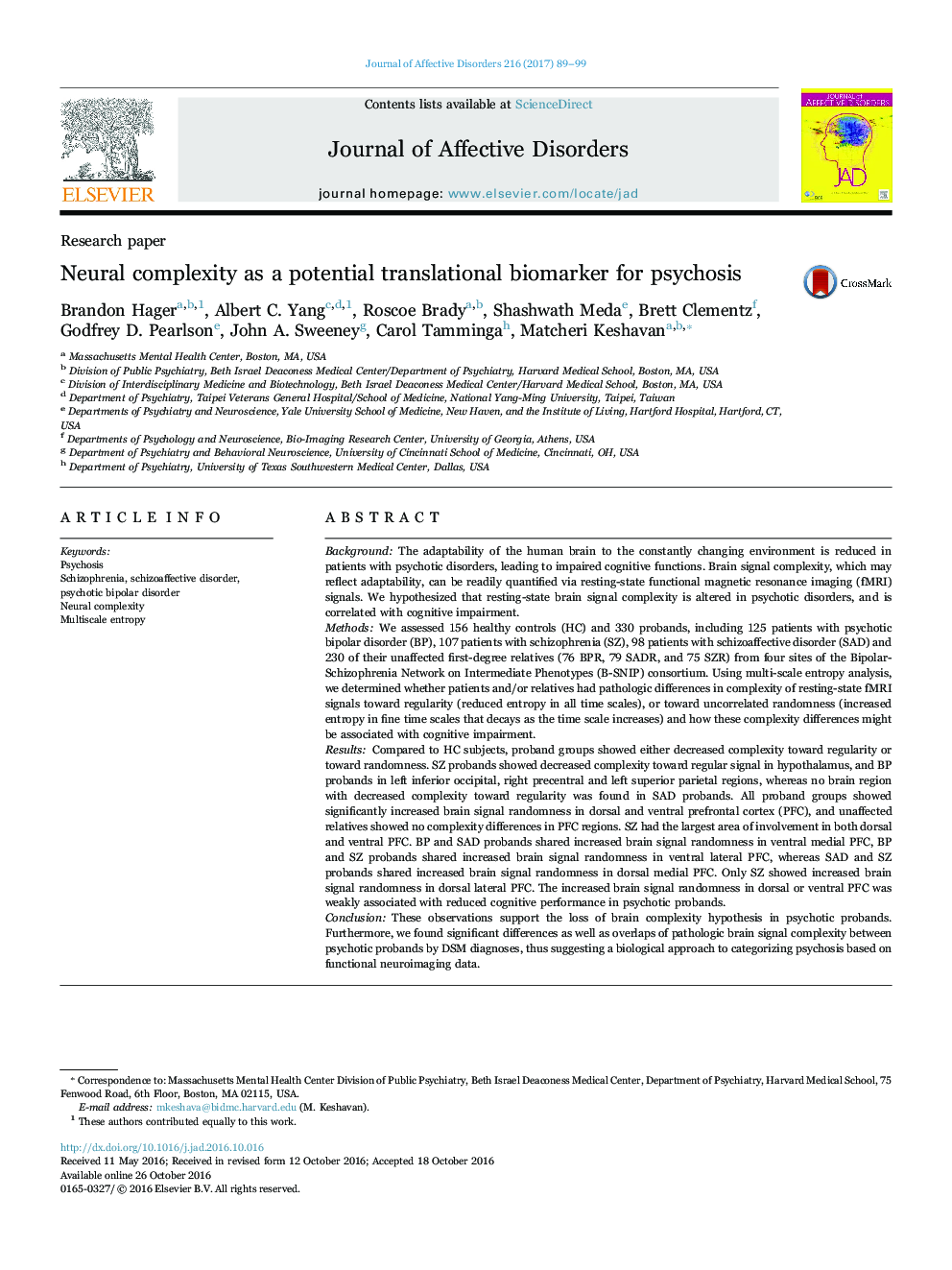| کد مقاله | کد نشریه | سال انتشار | مقاله انگلیسی | نسخه تمام متن |
|---|---|---|---|---|
| 5722310 | 1608109 | 2017 | 11 صفحه PDF | دانلود رایگان |
- Multiscale entropy quantifies pathologic brain signal dynamics of regularity or randomness.
- Psychotic probands show increased brain signal randomness in the prefrontal cortex.
- Increased brain signal randomness is associated with reduced cognitive functions.
- Psychotic probands partially overlap in prefrontal cortex by DSM diagnoses.
BackgroundThe adaptability of the human brain to the constantly changing environment is reduced in patients with psychotic disorders, leading to impaired cognitive functions. Brain signal complexity, which may reflect adaptability, can be readily quantified via resting-state functional magnetic resonance imaging (fMRI) signals. We hypothesized that resting-state brain signal complexity is altered in psychotic disorders, and is correlated with cognitive impairment.MethodsWe assessed 156 healthy controls (HC) and 330 probands, including 125 patients with psychotic bipolar disorder (BP), 107 patients with schizophrenia (SZ), 98 patients with schizoaffective disorder (SAD) and 230 of their unaffected first-degree relatives (76 BPR, 79 SADR, and 75 SZR) from four sites of the Bipolar-Schizophrenia Network on Intermediate Phenotypes (B-SNIP) consortium. Using multi-scale entropy analysis, we determined whether patients and/or relatives had pathologic differences in complexity of resting-state fMRI signals toward regularity (reduced entropy in all time scales), or toward uncorrelated randomness (increased entropy in fine time scales that decays as the time scale increases) and how these complexity differences might be associated with cognitive impairment.ResultsCompared to HC subjects, proband groups showed either decreased complexity toward regularity or toward randomness. SZ probands showed decreased complexity toward regular signal in hypothalamus, and BP probands in left inferior occipital, right precentral and left superior parietal regions, whereas no brain region with decreased complexity toward regularity was found in SAD probands. All proband groups showed significantly increased brain signal randomness in dorsal and ventral prefrontal cortex (PFC), and unaffected relatives showed no complexity differences in PFC regions. SZ had the largest area of involvement in both dorsal and ventral PFC. BP and SAD probands shared increased brain signal randomness in ventral medial PFC, BP and SZ probands shared increased brain signal randomness in ventral lateral PFC, whereas SAD and SZ probands shared increased brain signal randomness in dorsal medial PFC. Only SZ showed increased brain signal randomness in dorsal lateral PFC. The increased brain signal randomness in dorsal or ventral PFC was weakly associated with reduced cognitive performance in psychotic probands.ConclusionThese observations support the loss of brain complexity hypothesis in psychotic probands. Furthermore, we found significant differences as well as overlaps of pathologic brain signal complexity between psychotic probands by DSM diagnoses, thus suggesting a biological approach to categorizing psychosis based on functional neuroimaging data.
Journal: Journal of Affective Disorders - Volume 216, July 2017, Pages 89-99
